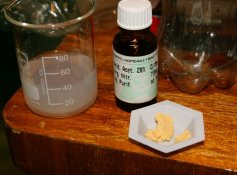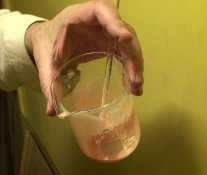Photo Engineer
Subscriber
Well, it is nice to see people getting the chemicals they want.
VWR will not sell me a new reference electrode but some other companies will. I can get Silver Nitrate, but not Potassium Nitrate (because it is used to make bombs!), but you can get Nitrates most anywhere for fertilizer. Most hardware stores sell a dreadfully impure version of Potassium Nitrate for gardening use (it contains a lot of KCl). At the risk of being condemned, I'll tell you that some Silver salts are more explosive than you might imagine!
So, for those who say it is easy to get chemicals, I say go for it. But don't count on it being easy forever.
The Lab Depot is very good. It is a source I suggested in the workshop to my students, but I only get hardware from them. I also suggest Antec, www.kyantec.com for chemicals. I get my Erythrosine from them among other chemicals and hardware.
So, it is a mixed bag, but remember, I have watched this trend over time and seen the tightening of regulations. And, I might add a big YES to the quesiton "does this extend to prepackaged kits?". Some companies will not ship kits out. You can only pick them up at the store.
Look at UPS regulations. I cannot ship a developer. I don't have a license for shipping alkaline solutions. (Does that include Milk of Magnesia?). They have a large poster on the counter with 3 major prohibitions. Alkalis are one. Now, I can go across town and get a license from FedEx, and then take the open package to them for packing, pay an exorbitant fee, and have them ship it. UPS will reluctantly do the same from their main shipping depot here in the city.
PE
VWR will not sell me a new reference electrode but some other companies will. I can get Silver Nitrate, but not Potassium Nitrate (because it is used to make bombs!), but you can get Nitrates most anywhere for fertilizer. Most hardware stores sell a dreadfully impure version of Potassium Nitrate for gardening use (it contains a lot of KCl). At the risk of being condemned, I'll tell you that some Silver salts are more explosive than you might imagine!
So, for those who say it is easy to get chemicals, I say go for it. But don't count on it being easy forever.
The Lab Depot is very good. It is a source I suggested in the workshop to my students, but I only get hardware from them. I also suggest Antec, www.kyantec.com for chemicals. I get my Erythrosine from them among other chemicals and hardware.
So, it is a mixed bag, but remember, I have watched this trend over time and seen the tightening of regulations. And, I might add a big YES to the quesiton "does this extend to prepackaged kits?". Some companies will not ship kits out. You can only pick them up at the store.
Look at UPS regulations. I cannot ship a developer. I don't have a license for shipping alkaline solutions. (Does that include Milk of Magnesia?). They have a large poster on the counter with 3 major prohibitions. Alkalis are one. Now, I can go across town and get a license from FedEx, and then take the open package to them for packing, pay an exorbitant fee, and have them ship it. UPS will reluctantly do the same from their main shipping depot here in the city.
PE









 I just received an order from VWR. Nothing dangerous unless your a 2-year old. But still,I bought as an individual with no business license of any kind.
I just received an order from VWR. Nothing dangerous unless your a 2-year old. But still,I bought as an individual with no business license of any kind.



